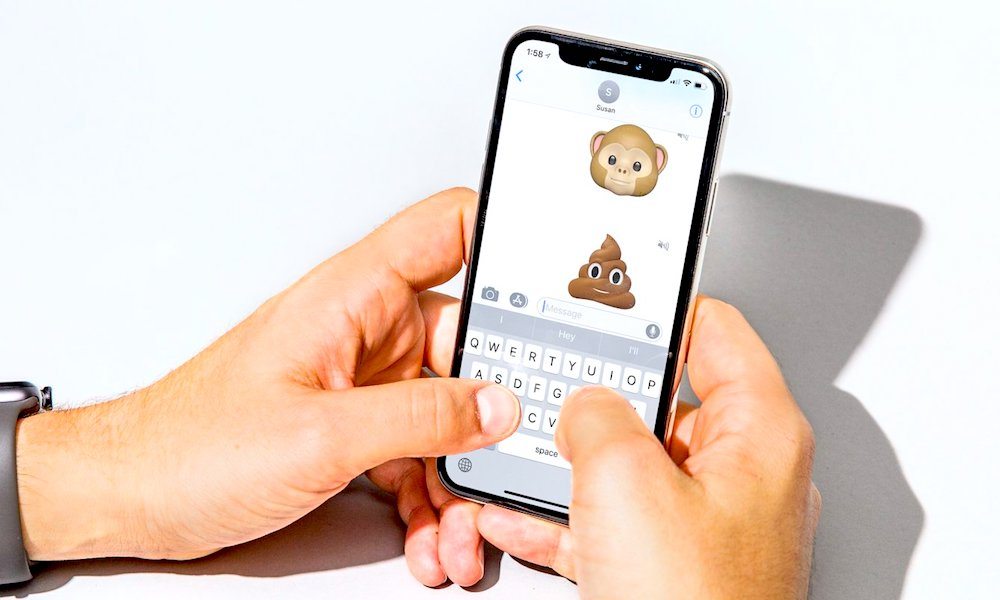Animoji Could Work on iPhone 8 — But Here’s Why It Would Suck

Toggle Dark Mode
Critics like to call the iPhone X a $1,000 emoji machine. They are referring to the new Animoji, an iPhone X exclusive feature that relies on Apple’s new face-mapping TrueDepth Camera. So when a well-meaning YouTuber suggested that Animoji could have been added to the iPhone 8 and iPhone 8 Plus, the Apple blogosphere promptly exploded.
Tech vlogger Marques Brownlee made that claim in a review of the iPhone X posted on Tuesday. In his review, he contends that Animoji doesn’t use Apple’s depth-mapping technology — and instead, just uses the normal front-facing camera. He supposedly demonstrates this by covering several of the infrared sensors, concluding that Animoji doesn’t need those sensors because it still worked while they were covered. You can see that moment around the 11:40 mark below.
The next logical step in that thought process it that Apple maliciously made the feature an iPhone X exclusive to get more people to buy the higher-end device. But what’s really going on?
Apple’s Response
Apple, of course, was quick to respond to those accusations. Reportedly, Marques Brownlee spoke to Apple about how its new animated emoji system worked. Contrary to his video, Brownlee wrote on Twitter that Apple told him Animoji does use the TrueDepth’s Camera for better depth-mapping and facial recognition accuracy.
In other words, Animoji could work on the iPhone 8 and 8 Plus (and possibly even older devices), but that experience, according to Apple, would be objectively inferior. Cupertino told Brownlee that they “wouldn’t want a worse Animoji experience for other iPhones without those sensors.”
Yes, Animoji Uses Infrared Sensors
Yes, it’s true. If you attempt to cover the IR sensors when using Animoji, the platform will seemingly continue to work as normal. But, that doesn’t mean that the platform isn’t using those sensors. If you’d like proof, just skip to the clips at the end of the video below (filed with a night-vision camera).
@apollozac the IR dot pattern is definitely in use for this. I recorded it with a night vision camera when testing FaceID with my identical twin sons. https://t.co/gVqxCZYg4S
The clips at the end of the video are using Animoji to produce the dot pattern. https://t.co/zabFJw1imU
— Oliver Thomas (@ulliverti) November 15, 2017
iMore’s Rene Ritchie, who spoke to Apple about its TrueDepth system, explains it well. “The IR system only (currently) fires periodically to create and update the depth mask. The RGB camera has to capture persistently to track movements and match expressions,” Ritchie wrote. “In other words, cover the IR system and the depth mask will simply stop updating and likely, over time, degrade. Cover the RGB, and the tracking and matching stops dead.”
How Animoji Uses TrueDepth
In other words, the IR sensors create an initial depth map for Animoji when you first open the platform. After that, Animoji relies on the standard RGB camera to track movement and expression — using that data to manipulate the initial depth map accordingly. After that process, it likely takes additional depth maps periodically.
- You can try it yourself. Start Animoji, and cover the TrueDepth sensors on the left side of the iPhone X’s notch. You’ll probably see results similar to Brownlee’s.
- Now, try this. Cover the TrueDepth sensors before you start Animoji. You’ll notice that the resulting animated face is a lot more glitchy and stuttery than normal. This is how Animoji would function on the iPhone 8, 8 Plus or older iPhones.
- For a similar experiment, try covering the TrueDepth sensors in low-light environments to see another example of how Animoji would look on other iPhones.
The Bottom Line
The bottom line is this: Apple is extremely particular. Perhaps it could have made Animoji a feature on its non-TrueDepth iPhones, and more likely than not, it would probably work just fine. Snapchat, Google and others have gotten by with similar platforms without Apple’s TrueDepth technology.
But, Apple being Apple, “just fine” is not up to their standards. Apple wants its features to be magical, seamless and to “just work.” It wouldn’t ship a sub-par version of Animoji to other devices, despite what consumers might want. If you know anything about Apple, that’s just not the way the people at Cupertino roll.






